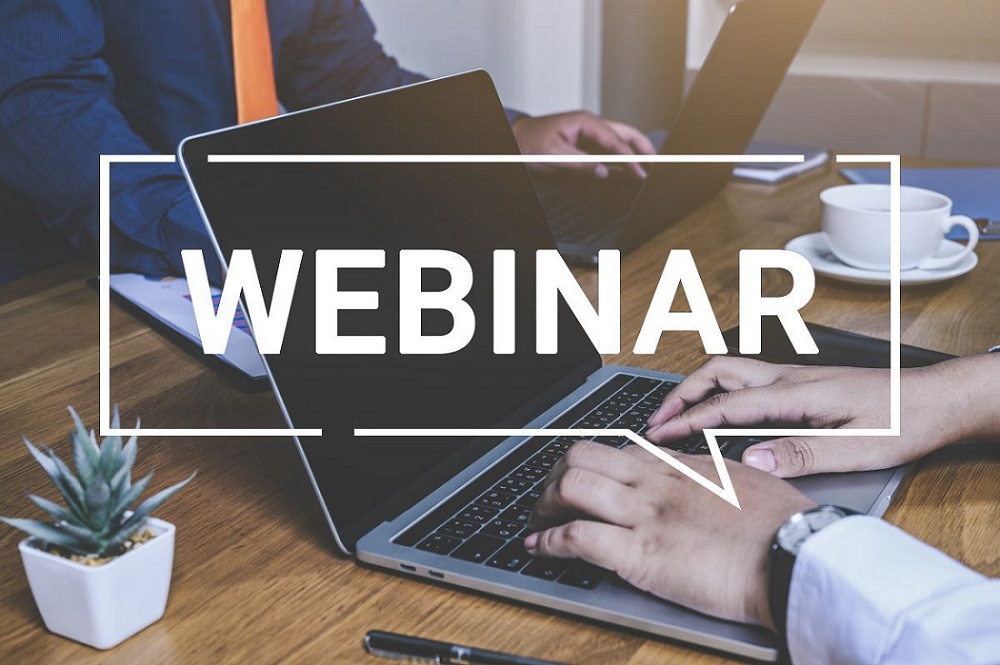Webinarach has quickly become a vital tool for businesses looking to connect with their audience, generate leads, and establish thought leadership. From established marketers to new business owners alike, webinars provide businesses with an effective means of connecting with audiences, generating leads, establishing thought leadership, and driving business growth. Our comprehensive guide reveals all you need to know to plan, execute, and evaluate successful webinars that leave lasting impressions with audiences.

What is a webinar?
A webinar (short for “web seminar”) is an online presentation, workshop or lecture which allows attendees to interact in real-time with its host(s). Unlike traditional in-person events, webinars eliminate geographical restrictions by permitting people from around the globe to attend from their homes or offices.
Importance of Webinars in Modern Business
Modern businesses must constantly innovate their marketing strategies in order to stay ahead of the competition online. Webinars provide businesses with a great opportunity to engage prospects, cultivate existing relationships, demonstrate expertise in certain niches or industries and showcase expertise within certain niches or industries. Furthermore, webinars allow brands to collect valuable attendee demographics and engagement metrics, which can inform future marketing initiatives.
Types of Webinars
Live webinars
Live webinars allow attendees to engage with the host(s) via real-time chat, polls, and Q&A sessions, providing participants with an engaging experience as presenters can address audience queries immediately and make changes as needed on the fly. This format fosters engagement while maintaining spontaneity for audience interactions.
Automated webinars
Automated webinars (also referred to as evergreen webinars) are prerecorded presentations that can be scheduled at specific times or made available on demand. While automated webinars don’t offer the interactivity of live events, they offer the convenience of being scaled and flexible enough for attendees to watch at their own pace.
Hybrid webinars
Hybrid webinars combines elements of both live and automated formats, offering attendees the best of both worlds. Hosts may introduce or provide Q&A before transitioning to prerecorded content to maximize engagement while accommodating busy schedules and time zone differences.
Planning and Preparation
Topic Selection
A key factor for the success of any webinar lies in choosing an engaging topic that connects with its target audience. Conduct research, assess industry trends, identify pain points or challenges faced by your target group and take into account both your expertise and their needs when brainstorming potential webinar topics.
Setting a Date and Time
When scheduling your webinar, take into account factors like its target audience’s time zone, work schedules and availability. Make sure not to conflict with major holidays or industry events, which could distract potential attendees. Select a date/time combination that maximises attendance and engagement for optimal results.
Selection of Platform
Selecting an effective webinar platform is critical for providing hosts and attendees with a professional, seamless, and enjoyable experience. Consider factors like ease of use, scalability, interactive features, and compatibility with your existing tech stack; popular examples are Zoom, GoToWebinar and WebinarJam.
Create Engaging Content
Crafting an Engaging Title and Description
Your webinar title and description serve as the first impression for potential attendees, so it’s crucial that it draws their attention and delivers information relevant to attendees. Make it easy for viewers to register by using engaging language with captivating visuals—all of which will help draw viewers in!
Structuring Your Webinar Content
Arrange your webinar content in an orderly sequence that flows smoothly from start to finish. Start off with a short introduction to establish rapport with your audience, providing them an outline of what’s in store. Break up the main body into digestible segments or chapters, incorporating slides, videos, and live demonstrations where necessary, before ending with a conclusion and call-to-action for maximum engagement.
Incorporating visuals and multimedia
Integrating slides, infographics, and videos can enhance audience engagement and comprehension during a webinarach. Use eye-catching visuals to reinforce key points, break up text-heavy slides, maintain audience interest, or reinforce key messages. Furthermore, consider including interactive elements like polls, quizzes or live chat to foster participation and interactivity during your presentation.
Promotion and Marketing strategies
Utilizing email marketing
Email marketing is an effective tool for driving registrations to your webinar, building excitement about its benefits, providing logistics details like date, time, and registration links, as well as personalise emails based on recipient interests and engagement history to maximise efficiency.
Leveraging Social Media Platforms
LinkedIn, Twitter and Facebook provide powerful opportunities for promoting your webinar to a broader audience. Share teaser trailers, behind-the-scenes footage or sneak peeks to generate buzz and increase awareness for it. Encourage followers to share posts using relevant hashtags to increase visibility of your event.
Integrating Influencers and Affiliates
Working with industry influencers to expand your webinar’s reach and credibility can increase registrations and engagement rates significantly. When looking for influencers that align with your brand values and target demographic, identify influencers whose values align with those of your brand or audience demographic, propose partnerships for guest hosting, co-promotion, or affiliate marketing, and then leverage their networks and influence for success!
Hosting the Webinar
Pre-webinar checklist
Prior to hosting your webinarach, conduct a detailed technical and logistical check to make sure everything runs smoothly. Test audio/video equipment, check internet connectivity, familiarize yourself with the platform’s features and functionality, and prepare any supplementary materials such as slides or handouts as needed; communicate logistical details to attendees registered for your session.
Engaging Participants during a Webinar
Aim for a dynamic and interactive webinar environment in order to encourage participation and engagement by attendees. Greet them warmly upon joining, encourage them to introduce themselves, address any comments and queries in real-time and use polls, quizzes and interactive exercises as ways to gauge audience understanding and obtain feedback.
Handling Technical Issues
Even with careful preparation, technical problems may still arise during a webinar. Reassure attendees that you are working hard to resolve it promptly; have an alternative device or communication channel ready in case something goes amiss; and be transparent about keeping participants up-to-date about any updates to their situation.
Follow-Up and Evaluation
Sending post-webinar emails
Once your webinar concludes, send post-webinar emails to both attendees and non-attendees alike to thank them for attending, offer additional resources or next steps, and share recordings for those who couldn’t attend or want to review content from past webinarach. And solicit feedback through surveys or polls in order to collect insights for future improvements.
Collect Feedback
Collect feedback from attendees of your webinarach in order to gauge its success and identify areas for improvement. Pose open-ended questions regarding content quality, presentation style, overall satisfaction levels, attendance rates, engagement metrics, and survey responses in order to gather meaningful insights that you can implement immediately.
Analyzing webinar Performance Metrics
Examine key performance metrics to gauge success and measure its impact on your business goals. Track metrics like registration rate, attendance rate, engagement duration, and conversion rate to gauge audience interest and measure ROI. Use this data to refine your webinar strategy for future presentations as well as drive continuous improvement.
Conclusion
Hosting a successful webinarach requires careful planning, engaging content creation, and strategic promotion. By following this guide’s strategies, you can craft engaging and impactful webinars that deliver significant business benefits, whether for educational purposes, inspiring your target audience, or selling products or services.





